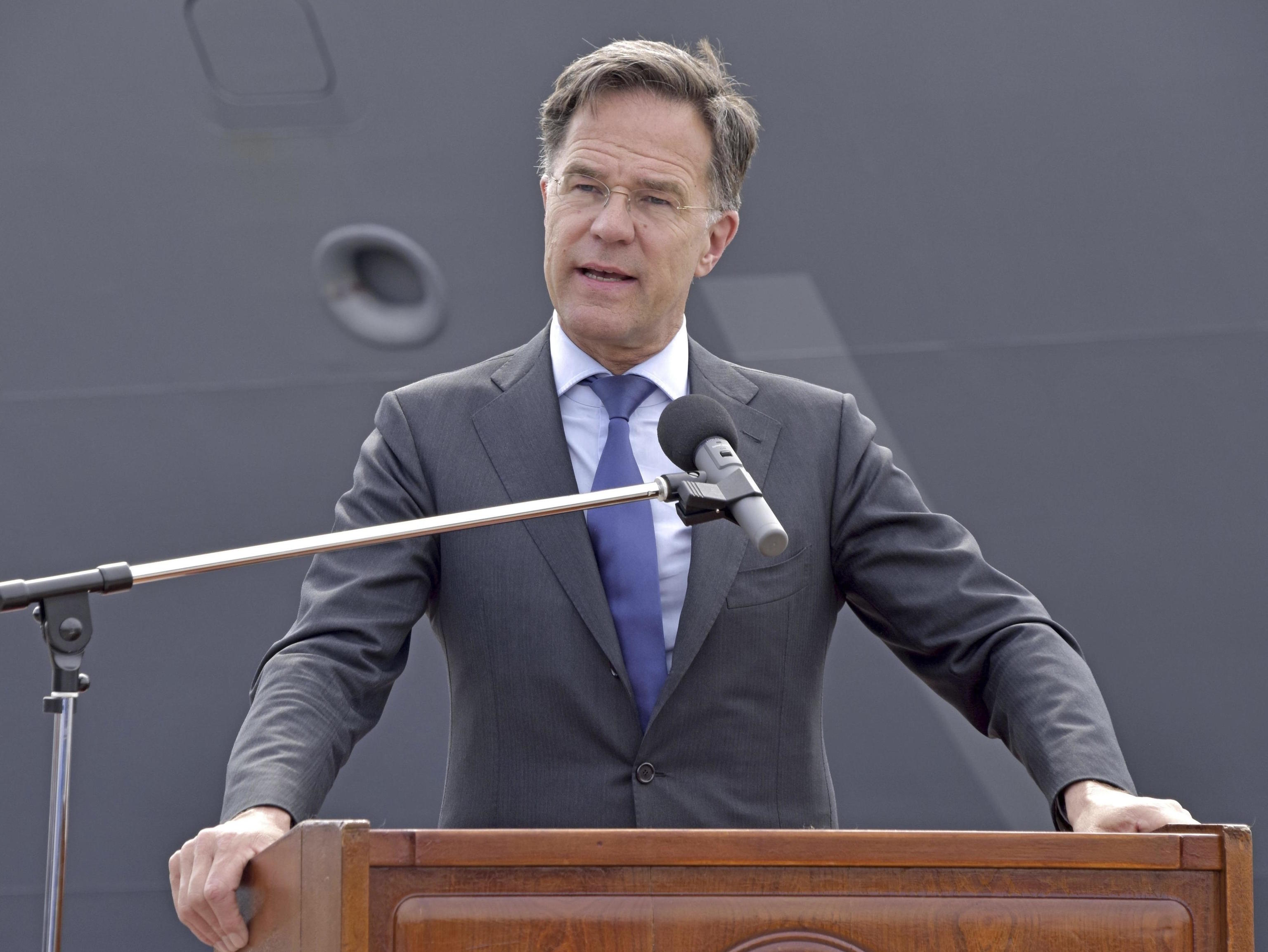European NATO countries will need to multiply their ground-based air defense by five in case of conflict with Russia, if they want to avoid a fate like that of Ukraine, which continues to be pounded by Russian missiles and Iranian-made drones.
This is one of the messages from NATO Secretary General, Mark Rutte, in the speech he is delivering this afternoon at the British think tank Chatham House just after finishing a meeting with the Prime Minister of the United Kingdom, Keir Starmer. Rutte and Starmer discussed the summit that NATO will hold in The Hague in two weeks, as well as the G-7 leaders' meeting starting in Alberta, Canada, on Sunday.
Rutte's demand reinforces NATO's role in coordinating European defense. But it also highlights one of the biggest flaws in that defense. Currently, European countries in the Alliance only have about 50 anti-aircraft missile batteries, of which approximately only half have anti-missile capabilities and none can shoot down projectiles before they enter the atmosphere, something that the US, Israel, Russia, and China can do.
Furthermore, the most sophisticated systems that Europe currently has are the American 'Patriot' systems, and given the difference in military industrial capacity on both sides of the Atlantic, it is likely that the increase in European capabilities will result in the short term in the acquisition of more missiles from Washington. Finally, Europe does not have an integrated air defense system. Although NATO partially fulfills that role, its functions are limited. Germany leads the European Sky Shield Initiative (EISS) project, in which 23 other countries participate, but not Spain, France, and Poland.
The Hague summit presents an opportunity and a challenge for Starmer. The opportunity is that, in a Europe that is rearming, the dimensions and capabilities of the United Kingdom's Armed Forces give that country a primacy that allows it to regain some of the international weight it lost with its exit from the European Union, the famous 'Brexit'.
Added to this is the political situation in the United Kingdom, where one of the things the four major parties (Conservatives, Labour, Liberal Democrats, and Reformists) agree on is unwavering support for Ukraine and the need for a strong defense. Last week, Starmer announced a plan that signifies the largest rearmament of the country since the Cold War and warned that the country must be on "a war alert level."
However, on that same day, both Starmer and the Minister of Economy, Rachel Reeves, avoided committing to the UK reaching a defense spending of 3.5% of GDP by 2032, as NATO wants at the behest - or perhaps under orders - of the United States. The most the British Labour government has promised is to reach 3% in the event of re-election, that is, in the 2029 or 2030 budget.
This leaves the UK in a paradoxical situation, as a leader, along with France, in defense in Europe but at the same time as a country that does not commit to reaching 3.5% by 2032. In 2024, Britain allocated 2.3% of GDP to defense. By 2027, this proportion will have risen to 2.5%.
The other main topic of the meeting between Starmer and Rutte was the G-7 'summit', which comes at a time of disintegration of the major Western alliances due to the ultranationalism of the United States government. On Saturday, a day before the meeting begins, Starmer will meet with the Canadian Prime Minister, the Liberal Mark Carney, to discuss security issues.
Carney has already stated that his country "is too dependent on US defense" and that "we cannot send three-quarters of our capital defense spending" to its southern neighbor, whose President, Donald Trump, wants to annex Canada. Just twelve days ago, Trump referred in a post on his Truth social network to the relationship between the two countries with the expression "separate but not equal," which in North America brings to mind the discrimination system against the black minority until the 1960s. In the same message, Trump said that if Canada wants to join the anti-missile air defense system he wants to develop to protect the US, it will have to pay $61.0 billion (almost 54.000 billion euros), but that "if it becomes our beloved 51st state" it will be free.
This situation opens up opportunities for British defense companies. But at the same time, it poses the risk of creating multiple mini-NATO within NATO, especially by two countries - the UK and Canada - that are extraordinarily dependent on the US in terms of cyber espionage and, in the case of the former, nuclear technology.
At the same time, Trump's plan to create an air defense shield covering missiles and aircraft - inspired by Israel's 'Iron Dome', mostly subsidized by the US itself - shows that the US also takes the protection of its airspace very seriously, even though it does not have rivals or enemies like Russia nearby.
However, Europe has nothing similar. The EISS, which pursues similar objectives, is in a very early stage, not well defined, and would depend on European, US, and Israeli missiles. The American 'Patriot' missiles remain unrivaled, and although this situation may start to change by the end of the year with the entry into service of the Franco-Italian SAMP/T system, the new weapons will arrive slowly to a continent where US competitors have been in service for decades.
Similarly, Europe lacks a high-altitude interception system like the American THAAD, the Israeli Arrow-3, the Russian S-400, or the Chinese HQ-19, HQ-26, and HQ-29. Germany has purchased the Arrow-3 and expects to start deploying it by the end of the year. But some European countries - notably France - oppose these missiles, designed to shoot down projectiles outside the atmosphere, being acquired from third countries.
